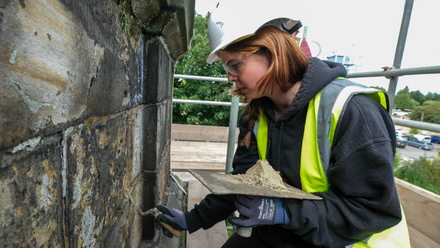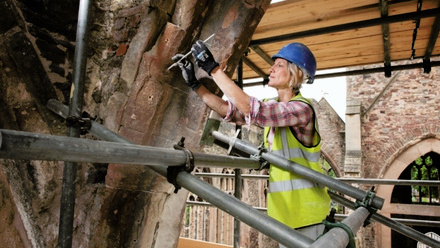18th-century hospital to become sustainable homes
Heritage property developer and contractor PJ Livesey has secured approval from the City of York Council to repurpose The Retreat, on the Heslington Road Estate, into a residential development.
The developer said the new homes in the Grade II and Grade II* heritage buildings will have sustainable and emergency efficiency measures, including solar panels, triple-glazed windows and advanced insulation materials, while retaining their original features. All the residential properties are aiming for an A-rated energy performance certificate. A surrounding historic park and gardens will be restored and opened up to the public.
PJ Livesey said it worked with Historic England to ensure the plans respect the historic characteristics of the site. The public body supported the planning application on heritage grounds and wrote that “the benefits of the scheme are considerable and decisively outweigh” any potential harm resulting from the alteration works.
Historic England said:
Historic England supports much of this proposal. It has been carefully designed to produce a new use for The Retreat which is appropriate to its significance and offers substantial heritage benefits.
The York Georgian Society, a charity promoting the preservation of Georgian buildings in and around the City of York, supported “overall” the redevelopment and “acknowledge[d]” PJ Livesey’s heritage-led approach. However, it raised concerns about the number of homes that will need to fund the estate’s maintenance.
The Retreat was founded in 1792 by William Tuke, a Yorkshire Quaker philanthropist, and opened in 1796. It was the first establishment in England that pioneered a ‘moral treatment’ approach where people experiencing mental health problems were treated with respect and dignity.
Unlike mental institutions of the time, chains or manacles were not used and physical punishment was banned. Treatment was based on personalised attention and an early example of occupational therapy was introduced, including walks and farm labouring in quiet surroundings.
The Retreat stopped inpatient and residential care services in 2018.
PJ Livesey’s managing director, Georgina Lynch, said:
Our plans will give a new lease of life to these stunning buildings that are steeped in history. Our vision for The Retreat plays homage to its heritage with the development designed to create spaces for wellness and tranquillity both within the spacious homes and the surrounding gardens.
Regional director for Historic England in the North East and Yorkshire, Tom Frater, said:
We’re really pleased that the council has approved this scheme. PJ Livesey Group’s plans for The Retreat show heritage helping to address the housing crisis, whilst also protecting York’s precious character.
We recognise the need to build more houses and we know that heritage can help. Up to 670,000 homes could be created from the repurposing of existing historic buildings in England such as The Retreat.
PJ Livesey expects to start work on site in early 2025.
This article originally appeared on Construction Manager






